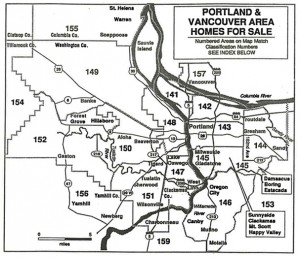MLS Insight: Thinking About an RMLS™ Without Area Numbers
This post is part of MLS Insight, a series about how things work at RMLS™.
 An MLS without area numbers: this idea might strike terror in your heart….or you might say to yourself, “it’s about time!” In any case, it is not a proposal that is currently on the table, but with the changes in technology and the way people think about location, it is probably not too early to start the conversation.
An MLS without area numbers: this idea might strike terror in your heart….or you might say to yourself, “it’s about time!” In any case, it is not a proposal that is currently on the table, but with the changes in technology and the way people think about location, it is probably not too early to start the conversation.
When RMLS™ opened its doors in 1991, it was to the REALTORS® in the Portland metropolitan area in Oregon. At that time, the major advertising vehicle for homes for sale was the newspaper—The Oregonian, in our case. RMLS™ based its MLS area numbers on the map and classified ad numbers of The Oregonian. The 12 core areas for Multnomah, Clackamas, and Washington counties have remained basically unchanged for 23 years.
When regions were added, local preferences regarding area numbers were retained. Clark County, for example, is divided into more than 30 areas, while Coos County is contained in one area.
The end result is more than 200 area numbers in RMLSweb, without a common reason why each geographical area is an “Area Number.” In some cases, a single area comprises several large but dissimilar communities. In others, areas may have so few listings and sales as a sample size that few, if any, conclusions could be drawn from looking at their data. In fact, there are rural areas that had no new listings and no closed sales in all of 2013.
In the world of today, The Oregonian posts its real estate ads online and there is no search option for area numbers. GPS location services have replaced maps to a large degree. It is a very different world than the world of 1991, when there was a Thomas Brothers map in the car of virtually every REALTOR®.
Here are some things to think about:
What role do area numbers play in the life of an RMLS™ subscriber today?
Has map search replaced searching by area number? Could it?
What could replace area numbers for searching besides map search—counties? zip codes? There should be something to narrow the initial search that pertains to location.
What about Market Action and other statistical reports? (Some counties are already reported in terms of zip codes in Market Action.)
If and when we ever do move away from area numbers, we need to have a good plan to meet the needs of our subscribers. Ideas?
Thanks for voyaging into the future with me. Next month we will talk with the various departments at RMLS™ and their plans for the upcoming year. If you have any questions you would like to have answered about how things work at RMLS™, I encourage you to post a comment to this blog.
UPDATE (November 20, 2014): RMLS™ is not the only MLS engaging in this interesting discussion. Here’s an article from the Seattle Post-Intelligencer about NWMLS area numbers.
